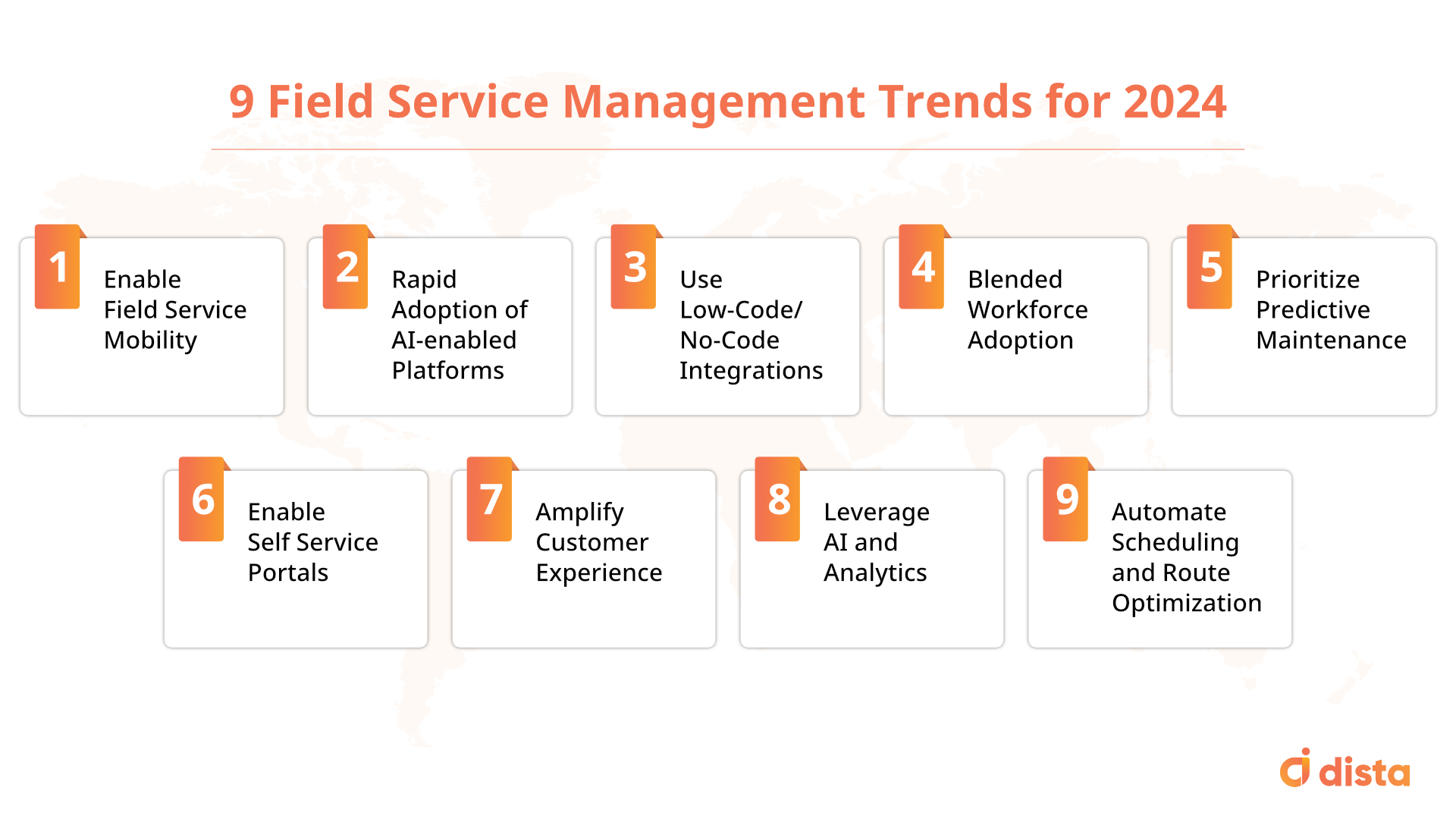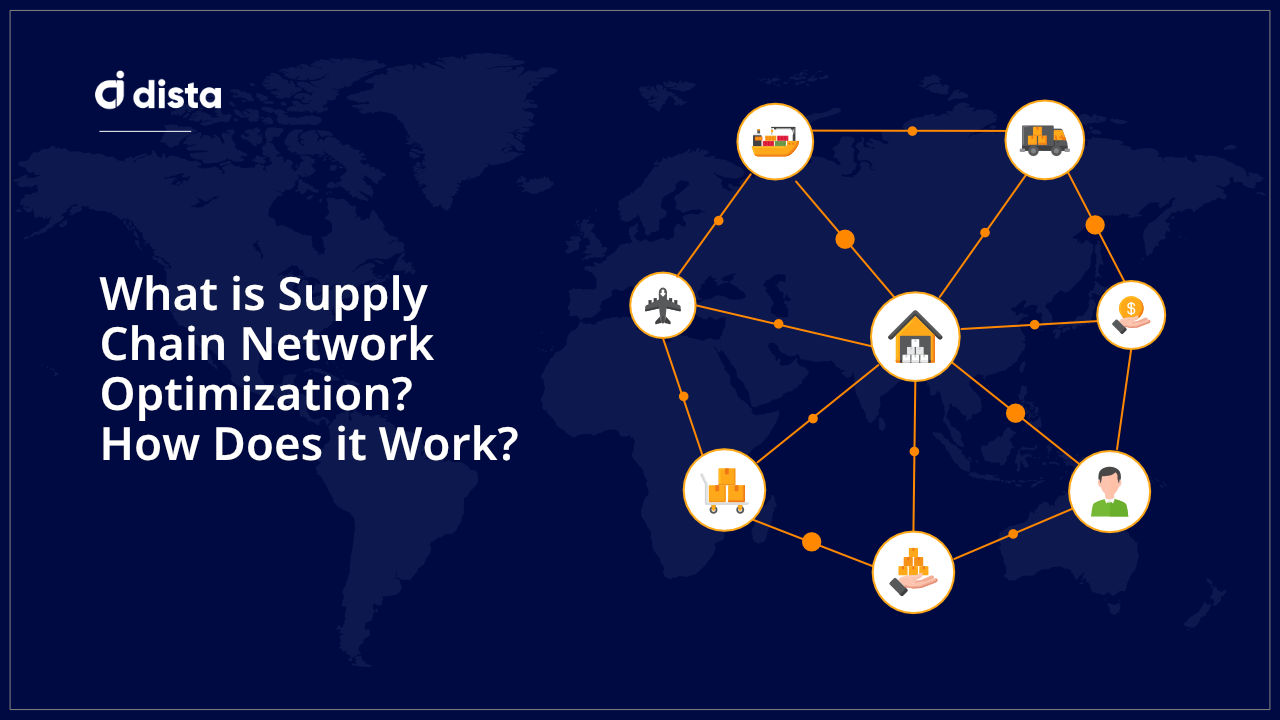Today’s businesses focus on a significant digital transformation to cater to increasing consumer demand. There is a conscious shift towards implementing AI/ML automation platforms to streamline daily operations and improve field service efficiency.
Recent research by Markets and Markets says the revenue forecast for field service management market size is set to hit USD 5.7 billion in 2026. Organizations focus on deploying intelligent, scalable field service management systems to optimize end-to-end field operations.
Read on to get more insights into key trends impacting the field service industry in 2024.

Field Service Management Trends for 2024
1. Enable Field Service Mobility
Empowering field service technicians with comprehensive field service management software will streamline tasks, enable better activity tracking, and provide an app that acts as a mobile office to boost productivity. Agents can review task updates, receive instant notifications, access real-time logs, and get customers’ locations to plan their routes. It further helps complete more jobs daily and improves the first-time fix rate.
Moreover, digitizing work orders improves technician efficiency, eliminates manual practices, and reduces reliance on paperwork. The app also provides access to articles and product guides on the go for the technician’s reference. A one-tap calling button to address the service requests enables seamless communication between agents and customers.
2. Rapid Adoption of AI-enabled Platforms
Many organizations still rely on manual processes. Manual planning inefficiencies result in service technicians spending less time on execution and more on planning and orchestrating the tasks.
However, emerging trends indicate increased artificial intelligence to automate tasks like scheduling and assigning jobs to field technicians. A field service management software assesses crucial parameters like proximity, availability, and capacity of service technicians to help determine the intelligent allocation of priority tasks to priority jobs. The software analyzes their skills and experience to optimize scheduling. Using AI and location intelligence helps optimize the end-to-end service process.
3. Use Low-Code/No-Code Integrations
Where you already leverage the power of APIs, it’s better to integrate platforms supporting no-code/low-code development. The integration allows companies to adapt to their client’s requirements without requiring specialized or additional applications to optimize workflows.
A low-code/no-code platform like Dista will eliminate the need to write extensive code or create a new resource from scratch to enable service management. The platform allows companies to customize existing business tools and modify the field service process without the assistance of a specialized team or IT infrastructure. Further, Dista harnesses the power of location intelligence to better visualize, strategize, and operationalize services dynamically.
4. Blended Workforce Adoption
There is a significant shift in mindset for organizations to meet customer demand for specialized services. However, there is also an inherent risk of high employee attrition that the organization should manage regularly. Therefore, businesses require a coherent mix of full-time employees, freelancers, and remote workers, and service automation is necessary to meet this demand.
Businesses mainly leverage this approach as it helps them respond to changes in seasonal demand and fill coverage gaps. A cohesive blended workforce lowers the risk of labor shortages and ensures the technical skill and expertise to expedite growing customer demands in today’s economy.
5. Prioritize Predictive Maintenance
Using AI and ML technologies, it’s possible to predict problems that might arise in the future. Actively monitoring sensor data for the provided service allows organizations to be prepared with field service solutions.
Fixing something before it breaks down with scheduled maintenance and repairs helps improve customer satisfaction. Preventive maintenance enhances customer safety and minimizes technician downtime by efficiently scheduling tasks.
Today, organizations use predictive maintenance to prevent device failure, mitigate breakdowns, forecast customer requirements, and extend product or service lifecycle. It’s an emerging trend to help organizations optimize field service practices.
6. Enable Self Service Portals
Organizations are focusing on developing interactive and feedback-enabled portals to troubleshoot problems that don’t require a technician at the site. A self-service portal is a great way to empower the customer and increase their satisfaction.
Field service management systems like Dista allow customers to select preferred time slots, provide feedback for services, and utilize personalized features designed to enhance user experience.
These portals also enhance information transparency and improve the visibility of current and pending requests. Moreover, client service portals are online 24/7 and feature an exclusive resource database with articles, tutorials, videos, FAQs, and other relevant resources.
7. Amplify Customer Experience
Businesses need to focus on incorporating customer-centric tools and resources. They can leverage field service automation software to boost serviceable area visibility. It offers vital business insights that help businesses with actionable insights and decision-making. Training field executives to improve customer interaction and provide faster service resolution is crucial to improving the overall experience.
8. Leverage AI and Analytics
Growing business competition has forced businesses to become data-driven. Robust AI/ML-based systems can offer insights into the probability of specific scenarios in the industry and market. The investment in advanced analytical tools will increase to gain a competitive advantage. These tools help business leaders make data-driven decisions and form intelligent business strategies.
9. Automate Scheduling and Route Optimization
A service technician’s day is spent in the field, visiting one client after the other. So, they rely on a strategic beat plan to complete their service quota. AI and ML-based field force management tools like Dista Service leverage location intelligence to optimize the field service process.
The software schedules and dispatches field agents after considering parameters like agents’ proximity, availability, and current capacity. It even considers the skills and experience of field service agents to determine the most favorable task schedule and route to follow for the assigned clients. The algorithm considers real-time traffic updates to optimize routes on the go, ensuring a quick and safe passage for field agents.
Final Thoughts
All the above trends are majorly customer-focused and will influence operations in the field service industry in 2024. There will be a rapid digital transformation owing to increased product complexity to meet the evolving customer expectations.
Dista Service, our robust field force management tool, helps leading enterprises improve productivity, enhance customer experience, and reduce costs. Would you like to see our platform in action?
Get in touch with us for a quick free demo.












